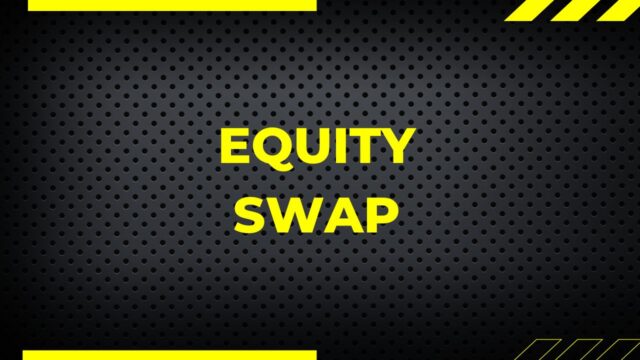
What is an equity swap and how does it work
An equity swap is a type of derivative contract that involves exchanging cashflows based on the performance of a underlying stock or index. The two parties involved in an equity swap agree to pay each other either a fixed rate of return or a variable rate of return, depending on the terms of the contract. The variable rate is typically based on the performance of a stock or stock index, while the fixed rate is set in advance. Equity swaps can be used to hedge against losses in the underlying security, or to speculate on its future performance.
The benefits of an equity swap
Equity swaps can be complex financial instruments, but they can offer a number of benefits to investors. For example, they can provide access to markets that would otherwise be unavailable, and they can allow investors to hedge against currency risk. Equity swaps can also be used to create leveraged positions in stocks or indexes. As a result, they can be an extremely powerful tool for investors. However, it is important to remember that equity swaps involve a high degree of risk, and should only be used by experienced investors.
The risks of an equity swap
Equity swaps also come with a number of risks that should be considered before entering into one of these contracts. First, there is the risk that the other party will default on the contract. This can happen if the company whose stock is being used as collateral for the swap goes bankrupt or if the value of the stock falls below a certain level. Second, there is the risk of market changes. If the stock market crashes, for example, the value of an equity swap could plummet. Finally, there is the risk of counterparty risk, which is when one party to a contract tries to renegotiate the terms after the contract has been agreed upon. While equity swaps can be a useful tool for investors, it is important to understand the risks involved before entering into one of these contracts.
How to execute an equity swap
To execute an equity swap, the first step is to identify a counterparty with whom to trade. Next, both parties will agree on the terms of the contract, including the notional amount, swap rate, and underlying asset. Once the contract is signed, each party will pay the other the agreed-upon amount at specified intervals. At the end of the contract term, the final payments are made and the swapped assets are returned to their original owners.
Equity swaps can be used to hedge against adverse price movements or to speculate on expected price movements. When used correctly, they can be powerful tools for managing risk and achieving investment goals.
Things to consider before executing an equity swap
Before entering into an equity swap, there are a number of important factors to consider. First, it is important to have a clear understanding of the terms of the agreement. What type of security will be exchanged? What is the length of the swap? What are the obligations of each party? It is also important to consider the tax implications of an equity swap.
In some cases, swaps may be treated as taxable events, while in others they may be exempt from taxation. Finally, it is important to make sure that both parties have the financial capability to fulfill their obligations under the swap agreement. Equity swaps can be complex financial transactions, so it is crucial to consult with a financial advisor before entering into one.
The types of equity swaps
The most common types of equity swaps are based on stocks, but they can also be Based on indices, commodities, or currencies. The two parties in an equity swap usually have different investment objectives. For example, one party may be seeking to hedge against downside risk while the other party is seeking to speculate on rising asset prices. Equity swaps can be used to achieve a number of different objectives, such as portfolio diversification, hedging, and speculation.
What to do after executing an equity swap
After you have executed an equity swap, it is important to monitor the performance of the underlying security. If the security decreases in value, you will be responsible for making up the difference. Therefore, it is important to keep track of the security’s price movements and ensure that you have sufficient collateral to cover any potential losses. In addition, it is important to monitor the creditworthiness of the counterparty. If the counterparty defaults on their obligations, you may be forced to liquidate your position at a loss. For these reasons, it is essential to stay informed and proactive when you have executed an equity swap.
Common mistakes people make when executing an equity swap
One mistake is failing to properly assess the risks involved. Equity swaps are often complex financial instruments, and it is important to understand how they work before entering into a contract. Investors should also be aware of the potential for loss, as equity swaps can be highly volatile.
Another mistake is mismatching the type of equity swap with the investor’s investment objectives. There are different types of equity swaps, each with its own set of risks and rewards. For example, those seeking to speculate on asset prices may want to consider an index swap, while those looking to hedge against adverse price movements may want to consider a total return swap.
Finally, investors should avoid entering into an equity swap without fully understanding the terms of the contract. This is especially important if the swap is complex or if it involves collateral.


































